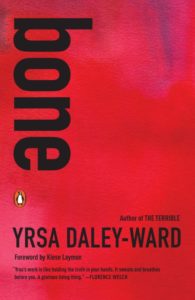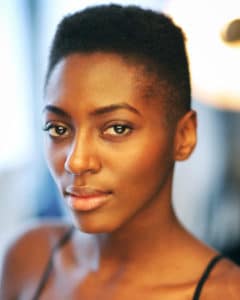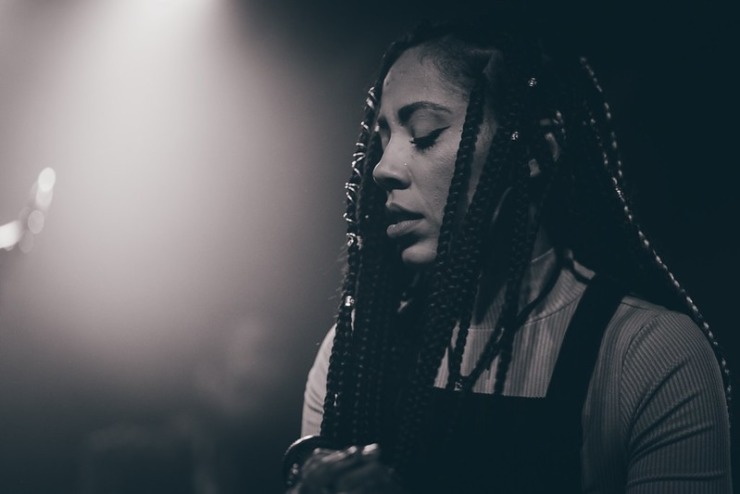Yrsa Daley-Ward First Known Via Instagram
If you like to be jolted out of your comfort zone, read bone by Yrsa Daley-Ward. The 72 poems in the collection are always arresting and often shocking, telling you this is who the poet is, like it or lump it. And she doesn’t care if you lump it.
As you read through poems of love, struggle, power, sensuality, sadness, joy, and trauma, you sense the poet is someone who not only defies expectations but also ignores them. Born in northern England of a Jamaican mother and a Nigerian father, Daley-Ward was raised by her Seventh-day Adventist grandparents. She struggled to support herself through her art and moved to South Africa, where she worked as a writer and often performed her poetry.
Her poetry first became known through Instagram; she self-published the first edition of bone in 2014. Penguin Books republished the collection in 2017, including a foreword by American writer Kiese Laymon. Daley-Ward is also the author of The Terrible: A Storyteller’s Memoir (2018) and the forthcoming The How: Notes on the Great Work of Meeting Yourself (November 2021).
Some of the poems of bone are short, no more than a few chiseled lines. Others are longer, sometimes considerably longer, like “it is what it is,” which tells a story about family that continues for 11 pages. Perhaps because many of these poems first saw life on Instagram, Daley-Ward uses a strong visual, almost photographic element. This poem almost reads like a photograph.
Sabbath

The elders glare.
You are your mother’s daughter.
Always meaning well and falling short.
Where is she these days?
they inquire
with knowing faces.
You don’t give them anything.
You say,
Paris this week, then on to Italy.
They say, oh that’s nice
with their mouths
and the air says all the rest.
You don’t care.
Everyone says you have her face and it’s a face
that’ll open doors.
Even locked doors. Especially locked doors
and so,
the skirt is split too high for church
but the collection box is yours,
You look like an actress,
says the usher.
Sit here. Right here. Relax.

Yrsa Daley-Ward
“Sabbath” is also a good example of how the poems of bone are highly personal and yet carefully framed, as if the poet has stepped outside of the words and the story they tell and is observing herself and the people around her. It is a cool eye looking with detachment and distance, even when, or especially when, she considers herself.
The poems of bone create discomfort and sometimes disorientation. They open a door into a personal interior, displaying the full range of emotions, from kindness and love to anger and outrage. And yet they exhibit a strange dispassion, that of the icy calm observer.
Photo by Paul Hudson,, Creative Commons, via Flickr. Post by Glynn Young.
How to Read a Poem uses images like the mouse, the hive, the switch (from the Billy Collins poem)—to guide readers into new ways of understanding poems. Anthology included.
“I require all our incoming poetry students—in the MFA I direct—to buy and read this book.”
—Jeanetta Calhoun Mish
- Poets and Fables: Steven Flint and “The Sun and the Boy” - July 3, 2025
- Poets and Poems: Alison Blevins and “Where Will We Live if the House Burns Down?” - July 1, 2025
- Poets and Poems: Paul Pastor and “The Locust Years” - June 26, 2025


L.L. Barkat says
Loved this part…
“They say, oh that’s nice
with their mouths
and the air says all the rest.”
Great backstory, Glynn. Thanks for sharing with us! 🙂